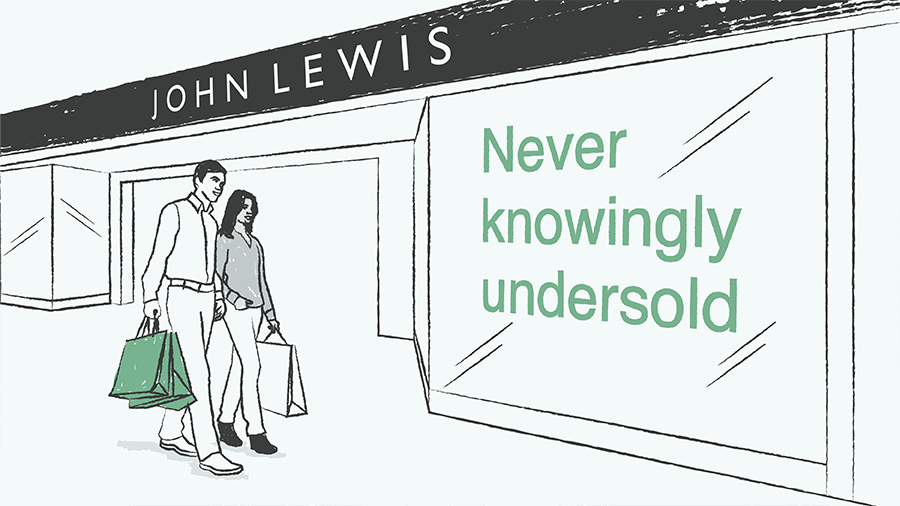
“Does the world need more shoes?” This is the sort of question you can expect if you are blonde and starting up your own shoe business. But actually, any entrepreneur needs a clear view of why, what, who and how a new venture will make money.
Working with tech startups between 2008-2014 I was continually astonished that significant financial backing had been given to software development without a clear route to the loot. In my case, PE advice recommended heroic levels of startup investment from the outset, based on well-rehearsed ‘scale and pace’ models that bore no relation to the niche retail model and P&L I’d outlined, so I ignored it. What I couldn’t ignore was the fact that I was entering an already crowded, highly competitive market.
So what gave me confidence to do it?
Firstly, personal experience of an emotionally charged niche opportunity. For business women, stylish but affordable low-heeled shoes are a chimera. The existing offer is so dire that a colleague actually wept when I asked about the shoes she was wearing. Unless you wanted to splash out on designer labels, the marketplace was failing an affluent, growing demographic – 50+ working women are largely ignored by the fashion industry.
“A colleague actually wept when I asked about the shoes she was wearing.. the marketplace was failing an affluent, growing demographic”
Entrepreneurship is valuable CV currency
Part of me also just wanted to have a go. Call me a Maverick (I like to think HR once said this fondly) but I believe digital is driving a new retail model, counter-intuitive to the big brand, scale-to-win infrastructure model we’ve been following. Consumers’ search behavior is increasingly defined by their own lexicon or images, and not by the existing retail brands’ preferences. Niche players and mono-brands have emerged, a shift from the dominant model ie from economies of scale to economies of small. That is, niche, curated, probably personalized. And there’s nothing like really walking the walk to banish suspicions that you belong to a generation of 50-year-old corporate millennial-riders with a notional digital title.
“Consumers’ search behavior is increasingly defined by their own lexicon or images, and not by the existing retail brands’ preferences”
For anyone looking to build your brand from scratch, those crucial early days can make the difference between success and survival. Detailed below are some key learnings from my journey so far:
-
Leverage your contacts
One of the delights of a startup is the variety of your day, but you can’t possibly know how to do everything. Leveraging your contacts is imperative for the many ‘how to’ moments, saving you time, angst, and money. It is surprising how generous people are in sharing knowledge, so repay the compliment by preparing your questions carefully and then letting them know how you got on. An ex-M&S buyer put me in touch with “Mike-The-Shoe”, a specialist in buying shoes from Italy. By knowing where to go and what questions to ask of factories, Mike probably saved me a frustrating year and many thousands of pounds. Meanwhile, a couple of gurus in branding and design created my identity and logo, remunerated only by quantities of wine.
-
Start marketing early – don’t wait till launch
The other thing your contacts can help with is building your pre-launch sales database. Whilst your contacts won’t all be the target customer, compose an easily forwardable email, asking them to help by sending your web-link to anyone they know who might be relevant. 60% of my first month’s sales and probably 20% of my first year sales will be from my network’s network. Great for morale and cashflow – and early sales = early learning. But even before this, be clear how you are going to market the product and if you can afford to do so long term. There are no gold-stars for a beautiful website and product if no-one knows about it. Write to journalists with high quality pictures and a crafted story; earmark budget or sample product for PR, and be bold.
-
Focus on the social media channel most relevant to your target market
A popular myth is that social media is instant free marketing ie “all you need to do is be on Instagram….”. The truth is, it’s a massively crowded, rapidly commercializing space with copious content. It can be a frustrating time-thief for a start-up unless you already a social maven with a large following. So start by focusing on the one social channel most relevant to your audience, preferably one with sophisticated targeting algorithms and conversion tools – or outsource. Pursue relevant bloggers with large followings, and follow them. Find a point of common ground, and send them some product to review. Embed tracking codes (even if just a discount code), measure impact and refine.
-
Deliver the central idea, but don’t sacrifice launch for perfection.
Trading will give you far more commercial insight than finessing your idea ad nauseam; as Mark Zuckerberg said “Done is better than Perfect”. Work out your pinch points, devise Plan B, and get on with it. I wanted more styles but I went live with only 3 – but in more colours. I brought launch forward 3 weeks because I’d been given a feature in the Daily Mail, making stock delivery too tight for a professional photo-shoot. So with DIY lighting from Amazon I photographed the product on myself. Customers loved that my shoe boxes were tied with a grosgrain ribbon – which was actually the back-up in case the ‘on-order’ logo stamp proved not to work on shoe boxes (it didn’t). But the earlier launch enabled me to change the sizing ratio (profitability) of my autumn stock order. Your customers don’t know what goes on behind the scenes – just create a complete, pleasing, on-time delivery experience for launch as early as you can, and learn.
-
Re-awaken the learning part of your brain. Be humble.
I have had a broad career, and could cost effectively wear many hats – CEO, CFO, designer and buyer, marketer, digital COO, decorator, handyman, box packer. I had to learn about postage processes in detail, as well as page loading, product coding and photoshop – no task was too small, the buck stopped here. But even I thanked the good Lord that I hadn’t been Skyped when I feverishly answered a call which proved to be from a journalist. I was trying on product; hopping round my mini-depot with one trouser leg rolled up like a mason and my hair in a bath hat – because obviously, I’d been painting the walls whilst resolving a woodlouse problem when the quality control delivery arrived. And that’s when the phone rang.
Follow the full story at www.oliveaubrey.com/blogs/olive-aubrey-blog, or register on site for a discount, and tell me what you think.
Olive Aubrey shoes are made in Italy with a nod to Sixties styling. They offer stylish shoes for professional and occasion wear. All with a low heel.

















